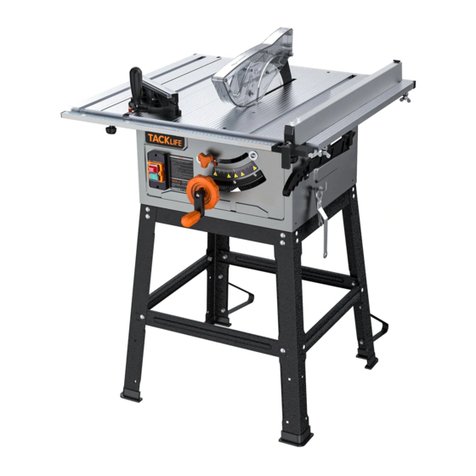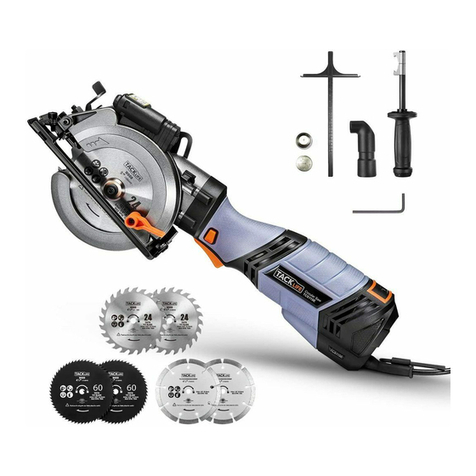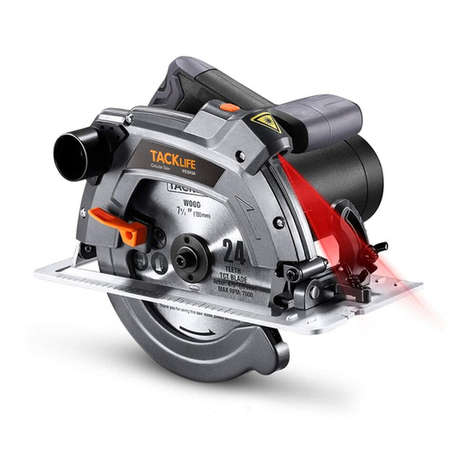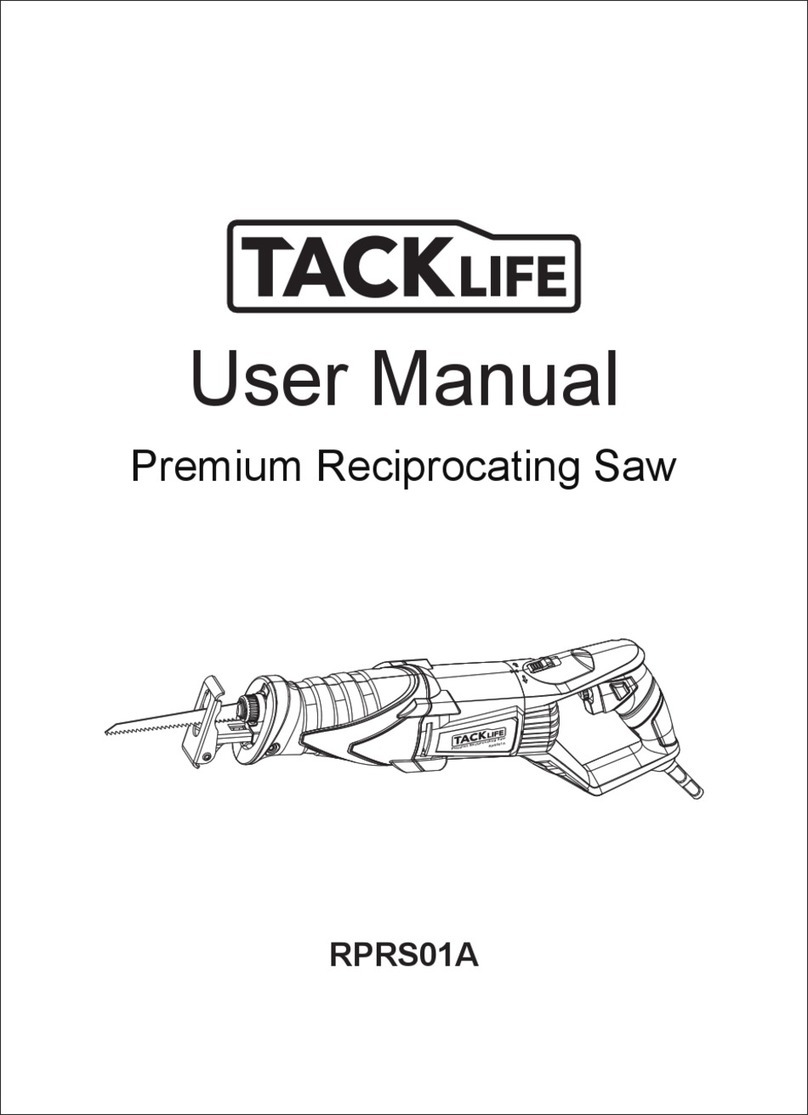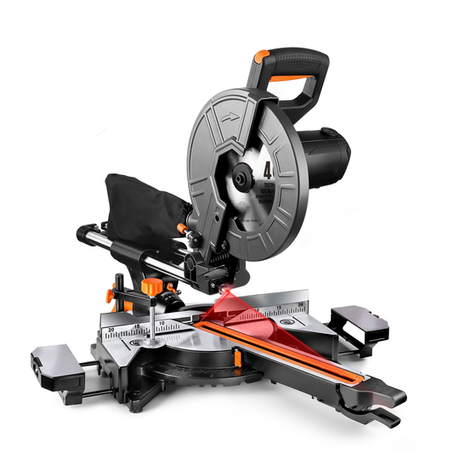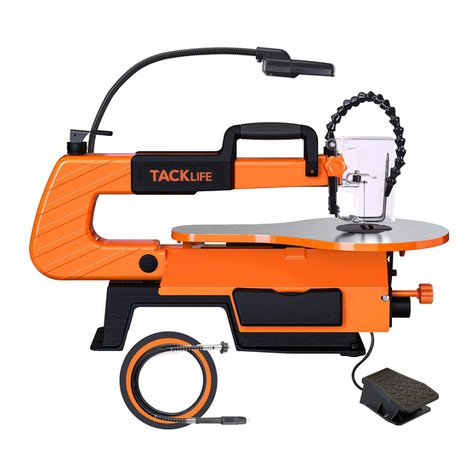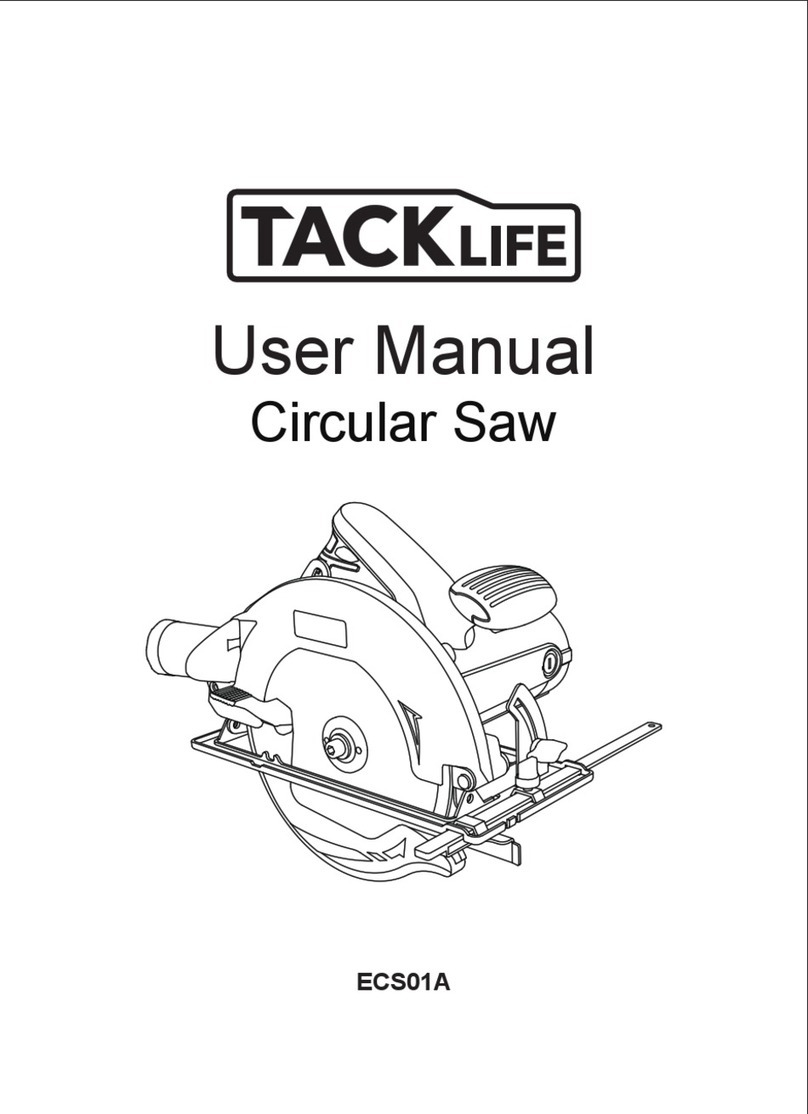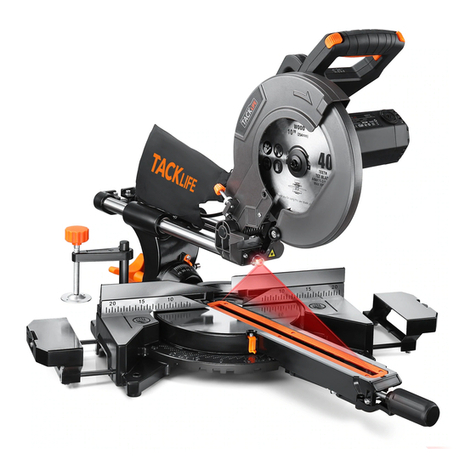
- EN -
This machine is designed for crosscutting wood and plastic in sizes commensurate with the
machine size.
It is not suitable for cutting firewood.
Use only saw blades which are suitable for the machine. Do not use cutting discs.
The manufacture assumes no liability whatsoever for improper use or if the machine has been
tampered with.
Give equal attention to the safety instructions, assembly and operating instructions as well as
prevailing accident preventions regulations.
6. General safety instructions
●Keep your work area clean and well lit to prevent accidents.
●Don’t use electric devices close to flammable liquids or gasses or in wet or damp environ-
ments.
If you fail to observe this, there is a danger of fire or explosion.
●Never leave the device running unattended.
●Never use the device when you are tired or lack concentration or if your reactions are
impaired due to consumption of alcohol or medication. Lack of attention can lead to serious
injury.
●Keep the tools clean and in good working order in order to be able to work better and safer.
●Don’t wear bulky clothing or jewellery.
●Make sure you can stand stably and have shoes that won’t slip.
●Use a head cover if you have long hair.
●Loose clothing, jewellery, and long hair can become entangled in movingparts.
●Always wear safety goggles.
●Wear a dust mask when working with materials that produce dust.
●Wear ear protection if a lot of noise is produced.
●Persons using the machines must not be distracted.
This could cause one to lose control over the tool.
●Don’t use any device that has a faulty on/off switch. An electric tool that can no longer be
switched on or off is dangerous and must be repaired.
●Always switch the device on before coming into contact with the material.
●Remove keys and adjusting tools before switching on the device.
●Never overload the machine. If the speed drops, unload the machine or switch it off. You will
work safer and better with the appropriate electric tool in a specific area of application.
●Stop the workpiece from turning, for example with a clamping device or a vice. Don’t work
on any workpiece that is too small to clamp in place. If you hold the workpiece with your
hand, then you can’t operate the tool safely.
●Keep electric tools out of the reach of children.
●Only use accessories recommended by the manufacturer.
●The mains voltage must correspond to the information on the machine’s type plate.
●Avoid body contact to grounded elements, e.g. pipes, radiators, stoves, and refrigerators, to
prevent an electric shock.
●Never carry the device by the cable. Only pull the cable from the receptacle with the plug.
Protect the cable from oil, heat, and sharp edges. Damaged cables can cause an electric
shock.
●Check the device and power cable for damage before starting work.
●When plugging in the power plug, make sure that the operating switch is not located in
position.
●Only use approved extension cables when using the device outside.
- 09 -
